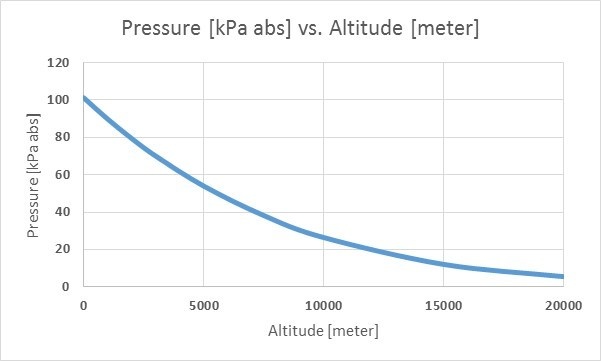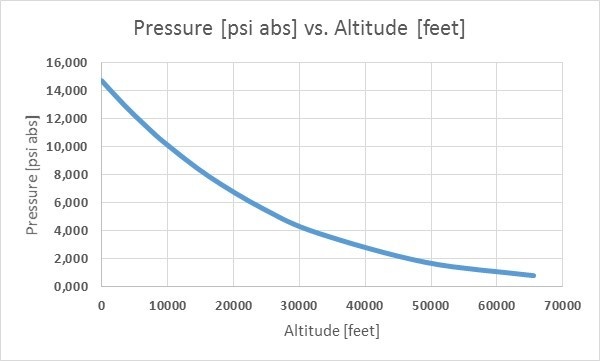What is barometric pressure
Barometric pressure
As mentioned, barometric pressure is the pressure caused by the weight of the air above us. The earth’s atmosphere above us contains air, and although it is relatively light, having that much of it, it starts to have some weight as gravity pulls the air molecules.
When I say “air,” it means the air around us, comprised of about 78% nitrogen, 21% oxygen, under 1 % argon, and a small amount of other gases. The air gets thinner as we go higher because there are fewer molecules.
Approximately 75% of the atmosphere’s mass is below the altitude of about 11 km (6.8 miles, 36,000 feet) thick layer on the earth’s surface. The border where the atmosphere turns into outer space is commonly considered to be about 100 km (62 miles) above the earth’s surface.
We can illustrate the column of air above us, being pulled by gravity, causing barometric pressure with the picture below:

The nominal barometric pressure on earth is agreed to be 101.325 kPa absolute (1013.25 mbar absolute or 14.696 psi absolute) which means that there is about 1.03 kilogram-force per every square centimeter ( 14.7 pound-force per every square inch) typically on earth’s surface caused by the weight of the air.
In practice, the barometric pressure very rarely is exactly that nominal value, as it changes all the time and varies at different locations.
Barometric pressure depends on several things like weather conditions and altitude.
For weather example: during a rainy day, the barometric pressure is lower than it would be on a sunny day.
The barometric pressure also varies based on altitude. The higher you are, the smaller the barometric pressure, which makes sense because when you move to a higher altitude, there is less air on top of you. The air at higher altitudes also contains fewer molecules, making it lighter than it would be at a lower altitude. The gravity also decreases at these heights. Due to these reasons, the barometric pressure is smaller at higher altitudes.
You can use a barometric pressure meter to measure your altitude, which is how airplanes can measure their height. The pressure drops as you go higher, it does not anyhow drop exactly linearly.
When you go all the way up to space, there is no pressure, and it is a perfect vacuum with no air molecules left.
The pictures below illustrate how barometric pressure changes when altitude changes. First with kPa versus meters, second with Psi versus feet:


Barometric (atmospheric) pressure units
There are a few pressure units that have been created specifically to measure barometric pressure.
One of these units is standard atmosphere (atm) which equals 101325 Pascal. There is also a unit called technical atmosphere (at) which is not the same as atm (1 at = 0.968 atm).
Torr is also used to measure barometric pressure, originally being equal to millimeters of mercury, but later it is defined as slightly different. Some SI units are also used such as hPa (hectopascal), kPa (kilo pascal), or mbar (millibar).
It is important to remember that we always talk about absolute pressure when we talk about barometric pressure.
Some practical considerations
We can easily feel the barometric pressure changing when we travel in an airplane. Even though there is pressure generated inside of the airplane, the pressure still drops as the plane goes higher. You can especially feel the growing pressure in your ears as the plane starts to land and comes to a lower altitude. The change is so rapid that your ears don’t always settle fast enough.
You may have also noticed how a yogurt cup is somewhat swollen when you are up in the air. The cup swells because it was sealed on the ground at a normal barometric pressure. As the plane ascends, the pressure inside the plane cabin decreases, causing swelling as the pressure inside the cup is higher.
Some people can feel the change in the barometric pressure in their body; experiencing headaches or aching in their joints.

















